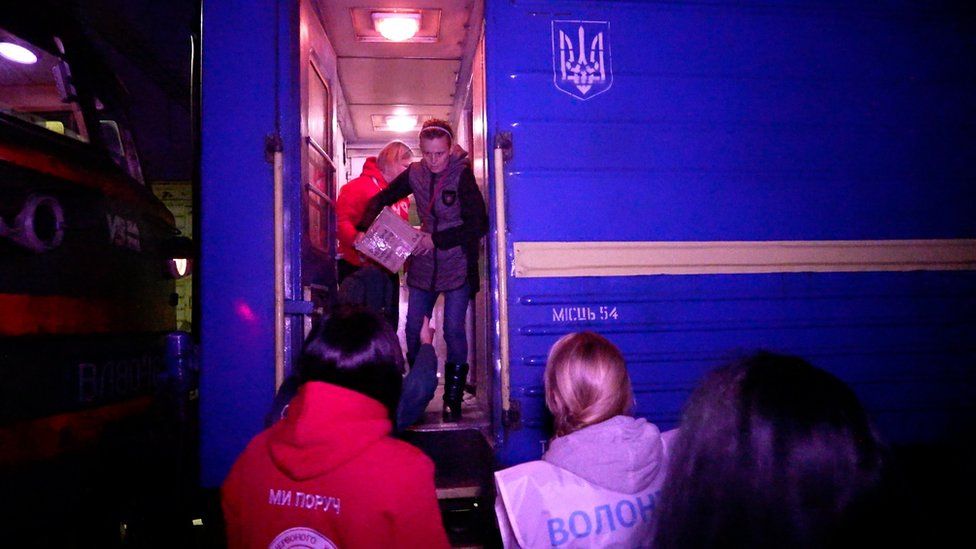It is still dark when an early train pulls into the station in central Ukraine and aid workers crowd expectantly around one of the carriages.
The doors then open and a small child steps into the platform light.
Hands stretch out to help her down as her mother follows, carefully passing her baby in a tiny pink carrycot to the helpers below.
These are Ukraine’s newest war refugees.
Last week, the authorities ordered the forced evacuation of children from 31 towns and villages close to the frontline.
This train has brought several families from the Donetsk region to relative safety further west. We cannot name the exact location for security reasons.

The orders – which are made whenever conditions are considered too dangerous – came after Russia renewed offensives in parts of the Donetsk region and fighting intensified in Kherson region.
As volunteers unload bags, boxes and suitcases, others usher the new arrivals, bewildered and exhausted, into the warmth of the station.
Here, three teenage girls sit on the benches, faces blank with shock. A loud meow comes from a basket at their feet.
“The last time a shell hit our house it was the tenth time,” their mother tells us.
Liliya Mykhailik says the family then moved to an apartment in the same village but, as strikes knocked out communication and energy links, her daughter’s online schooling became impossible.
Her husband has stayed behind with his father and her mother, who refused to leave.
Liliya says she is uncertain about her family’s future: “We travelled here blindly.”

As the family wait for a bus which will take them to their accommodation, aid workers hand out coffee and state officials hand out cash.
In addition to free transport to safety, Ukraine initially gives all forced evacuees money – around £45 per adult, £70 per child or vulnerable adult – and a place to live. The adults will be expected – eventually – to work.
No-one says so, but everyone here knows there is a chance they will not see their homes again.
And that is why, despite enduring daily danger and discomfort, some did not want to leave.
It is up to people like Pavlo Dyachenko to persuade them. He is one of the so-called ‘White Angels’ special police unit responsible for getting humanitarian aid in – and people out – of Ukraine’s most dangerous places.
“Everything has to be done really fast,” he says. “The danger is always there because Russians do not stop shelling.”

Getting families with children to safety presents a particular challenge. Every crew carries toys in the car.
“Someone has to talk with the children all the time, distract them from the dangers on the road or any other stressful moments,” he says.
While millions of Ukrainians have fled the war abroad, the Ukrainian government estimates there are nearly five million internally displaced people in the country. Forced evacuees are taken in by communities all over Ukraine.
We meet several families who have been placed in an old school.
The sound of someone playing the recorder floats down the corridor as Varvara, who is 10 years old, sits in front of a laptop in what was once a classroom. Appropriately enough, she is doing an online lesson with the school she can no longer physically attend.

Varvara came here with her mother Iryna and grandmother Svitlana from Kostyantynivka in the Donetsk region where shelling had forced them to live in a basement. They share a bathroom and kitchen with the other residents.
“I really like it here,” says Iryna and Svitlana agrees. But tears begin to stream down both women’s faces.
“We want to go home. We want all this to end.”
Varvara watches as they weep, unsurprised by their pain.
Ukraine’s refugee children may now be far away from the front line. But their lives continue to be shaped by the conflict.
Additional reporting by Hanna Tsyba

Sign up for our morning newsletter and get BBC News in your inbox.

